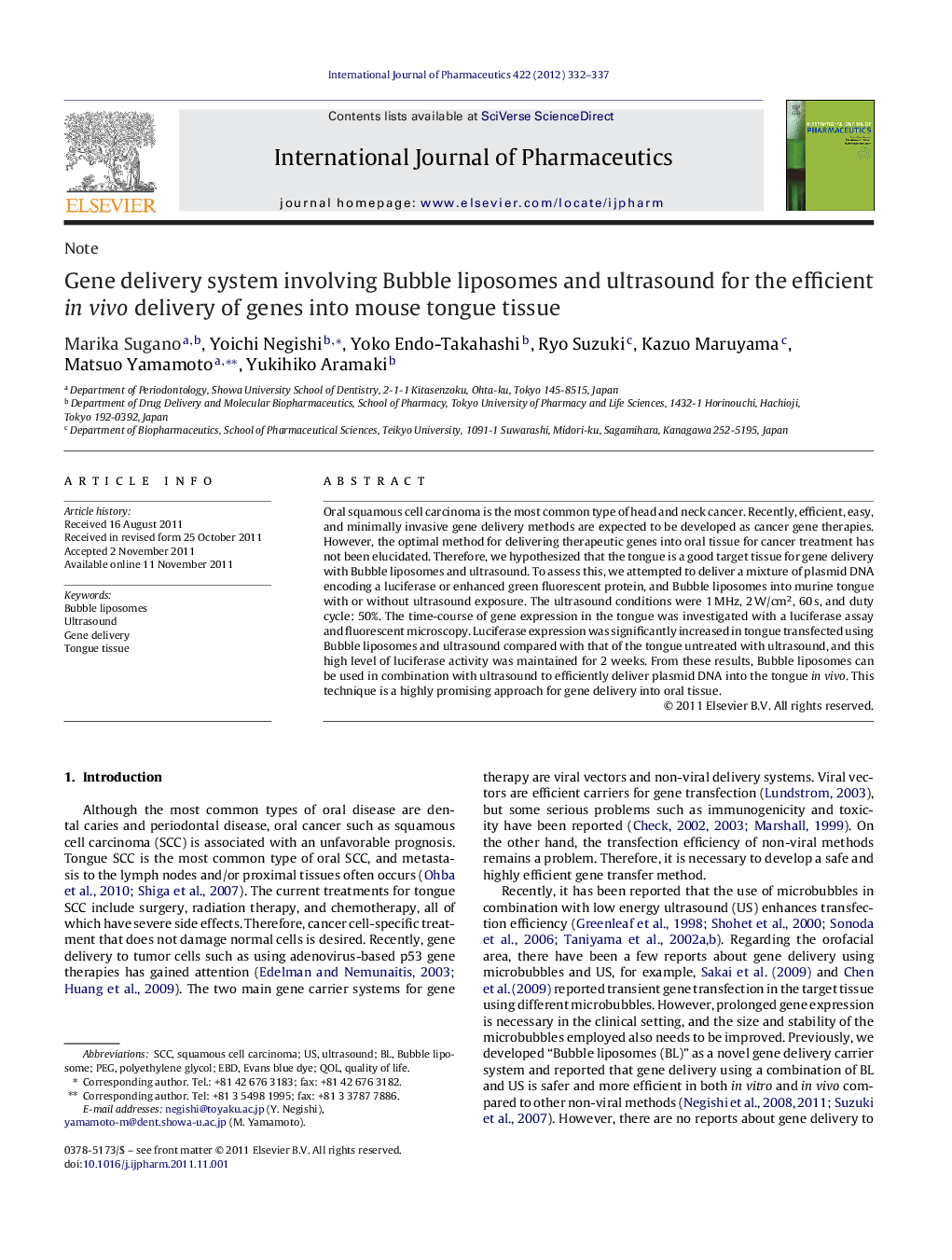| Article ID | Journal | Published Year | Pages | File Type |
|---|---|---|---|---|
| 2503116 | International Journal of Pharmaceutics | 2012 | 6 Pages |
Oral squamous cell carcinoma is the most common type of head and neck cancer. Recently, efficient, easy, and minimally invasive gene delivery methods are expected to be developed as cancer gene therapies. However, the optimal method for delivering therapeutic genes into oral tissue for cancer treatment has not been elucidated. Therefore, we hypothesized that the tongue is a good target tissue for gene delivery with Bubble liposomes and ultrasound. To assess this, we attempted to deliver a mixture of plasmid DNA encoding a luciferase or enhanced green fluorescent protein, and Bubble liposomes into murine tongue with or without ultrasound exposure. The ultrasound conditions were 1 MHz, 2 W/cm2, 60 s, and duty cycle: 50%. The time-course of gene expression in the tongue was investigated with a luciferase assay and fluorescent microscopy. Luciferase expression was significantly increased in tongue transfected using Bubble liposomes and ultrasound compared with that of the tongue untreated with ultrasound, and this high level of luciferase activity was maintained for 2 weeks. From these results, Bubble liposomes can be used in combination with ultrasound to efficiently deliver plasmid DNA into the tongue in vivo. This technique is a highly promising approach for gene delivery into oral tissue.
Graphical abstractFigure optionsDownload full-size imageDownload as PowerPoint slide
